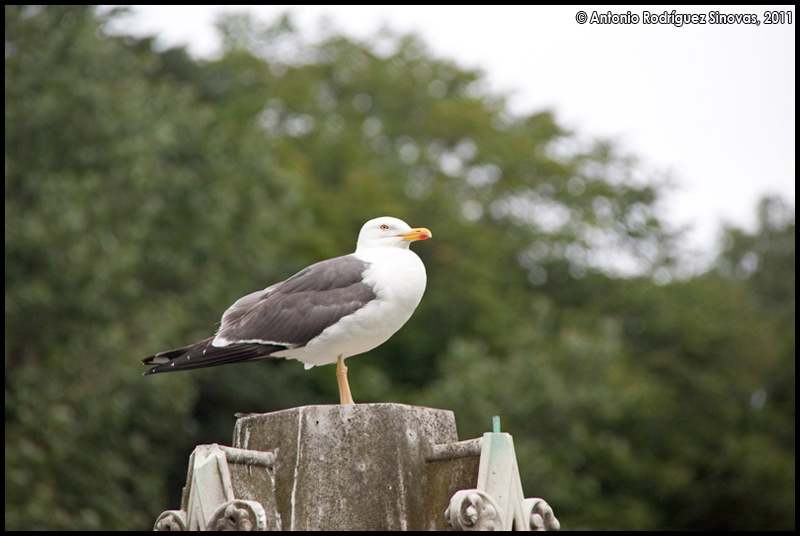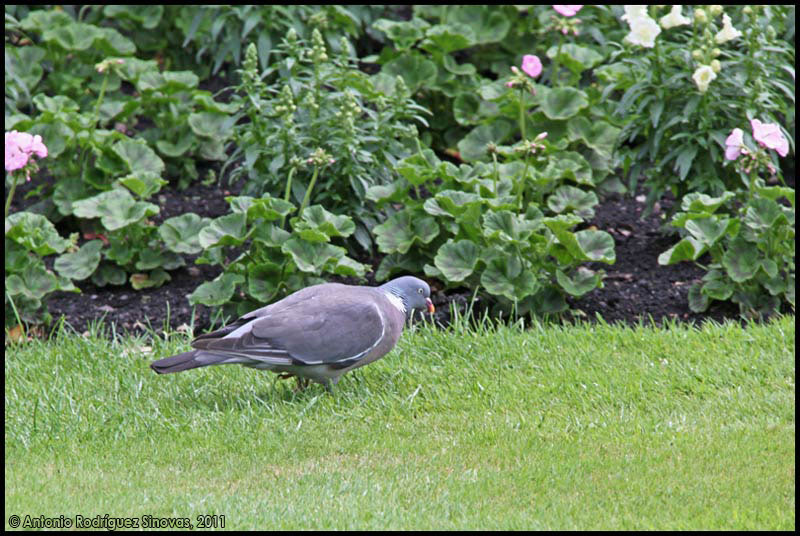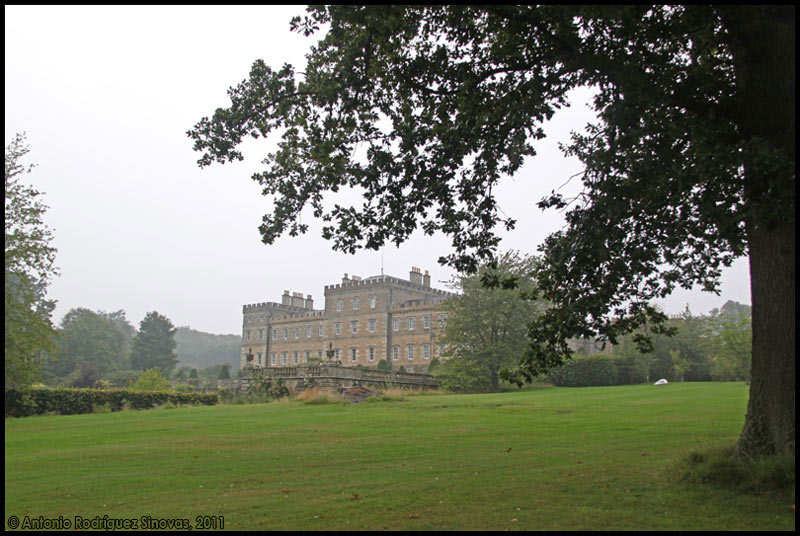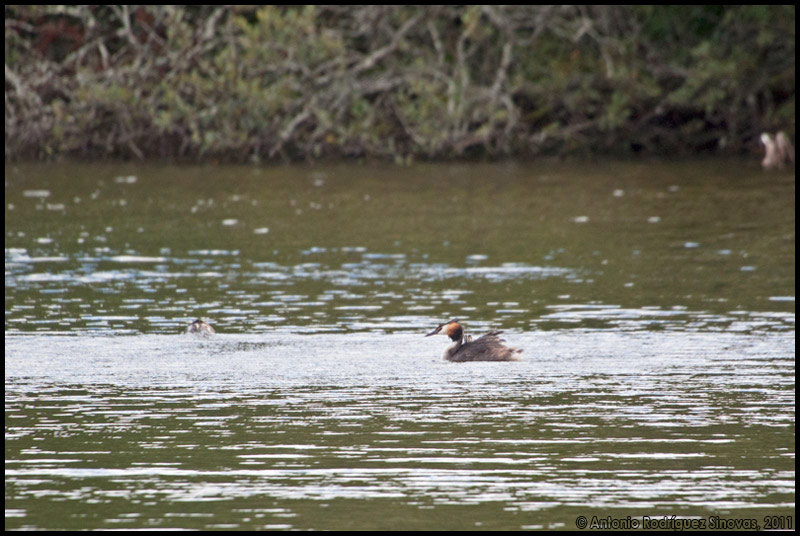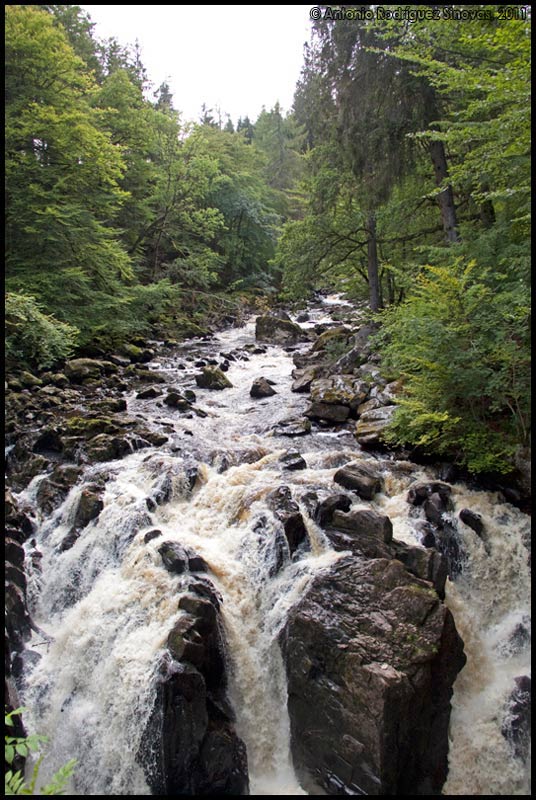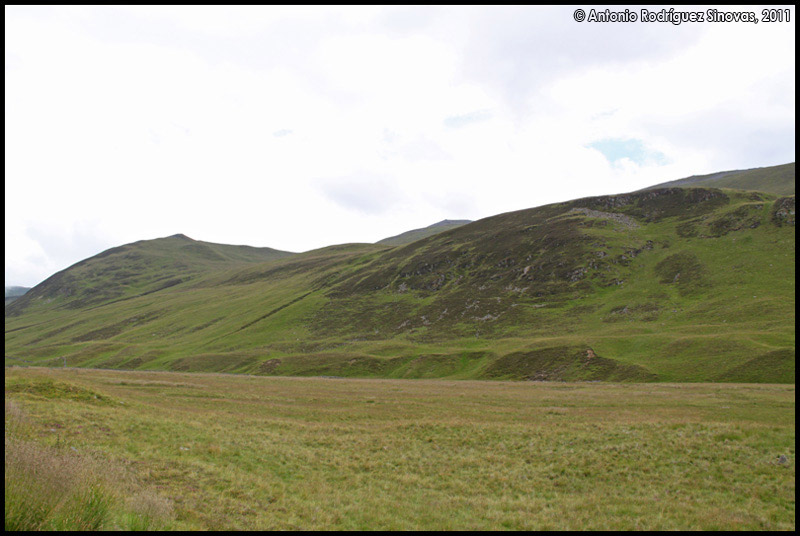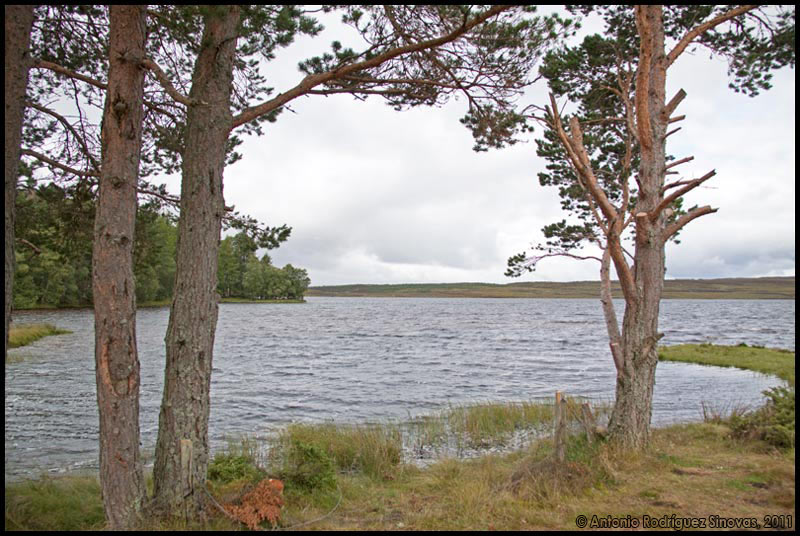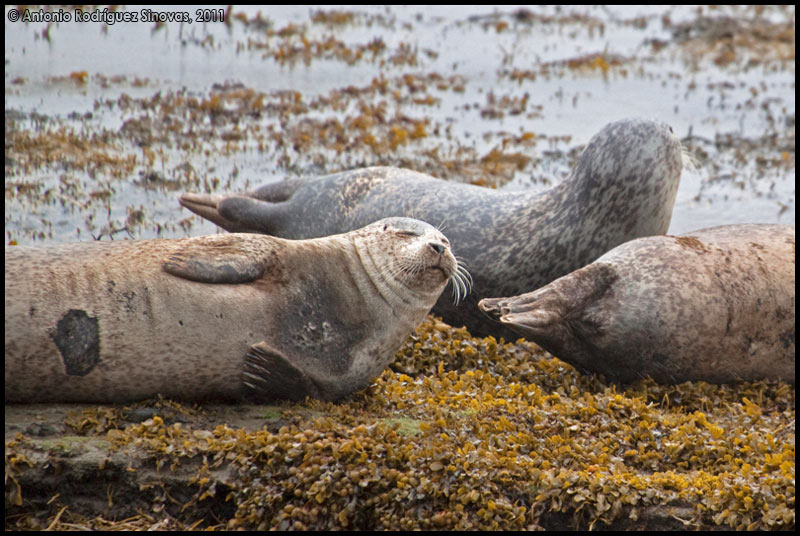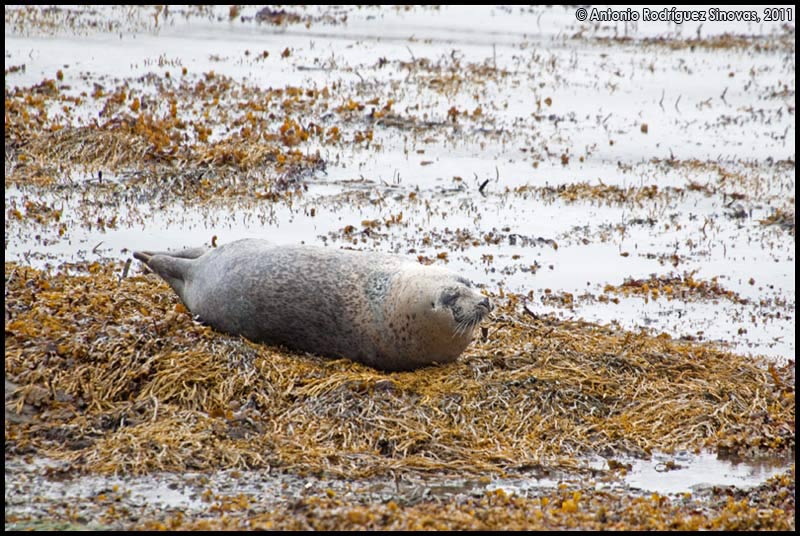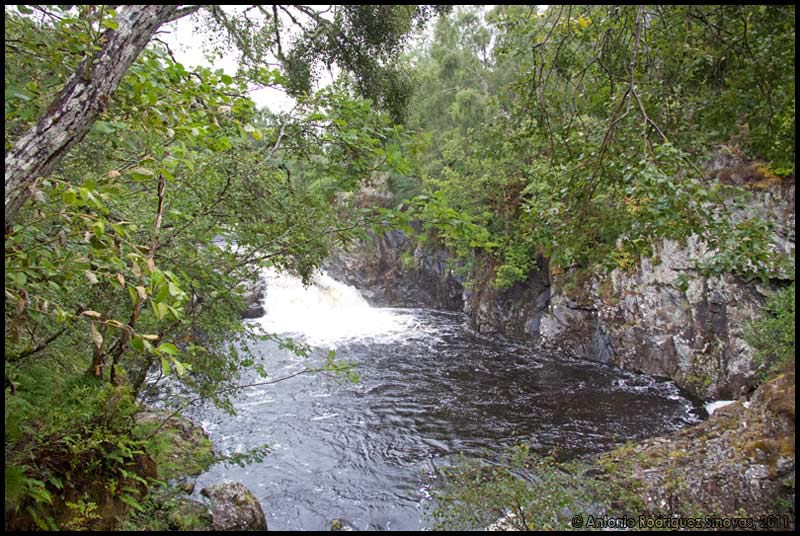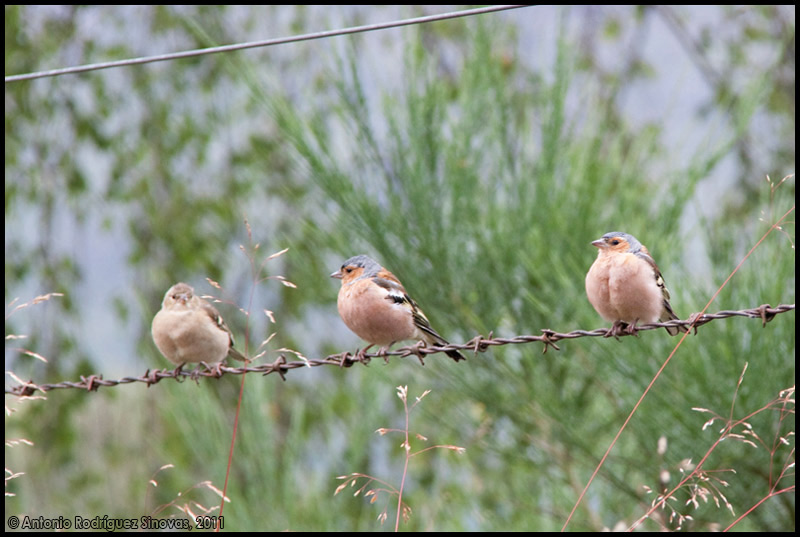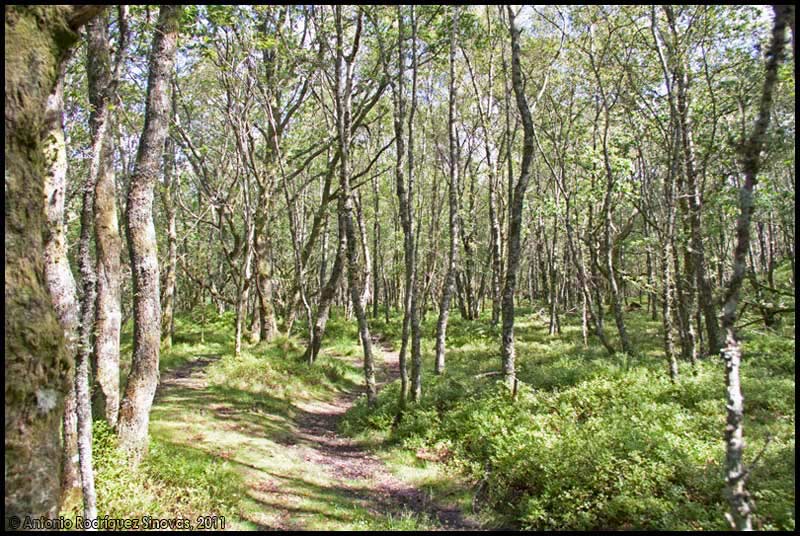El mapa de las principales zonas visitadas, junto con la lista completa de especies de aves observadas durante este viaje, puede encontrarse en este enlace. En resumen, y tras 16 días de un total de 19 de lluvia contínua, vimos un total de 85 especies de aves y 13 de mamíferos.
The map showing the main visited locations, together with the complete list of bird species observed in this trip, can be seen in this link. As a summary, and after 16 out of 19 days with continuous rain, we observe 85 species of birds and 13 of mammals.
Como el año pasado nos achicharramos de calor, pensamos que este año había que huir de él. Así que tras darle muchas vueltas, decidimos ir a pasar nuestras vacaciones a Escocia. Conociamos que era un buen destino, tanto para ver aves, como por otros motivos, como su historia y paisajes. Nos avisaron que agosto no era la mejor época para ver las aves marinas en sus colonias, que efectivamente, salvo la de Bass Rock, estaban ya abandonadas. De todas formas, decidimos probar suerte, y aunque las colonias estaban vacías, aún se podían ver las distintas especies por los alrededores. Eso sí, todo acompañado de una lluvia persistente.
As last year it was terribly hot, this year we though to escape of it. Thus, we decided to spent our vacations in Scotland. We knew that it was a goog destination, both for birding, and for history and landscapes. We also knew that august was not the best time to do birding, as seabirds probably were not in their nesting colonies. In fact, this was the case, with the exception of Bass Rock. Despite that, we decided to try with Scotland, and although colonies were empty, birds were in the sea around. Obviously, all accompanied with a continuous rain.
1. Edimburgo.
Llegamos a Edimburgo, donde, durante un par de días, visitamos un poco la ciudad. Por toda la ciudad eran muy abundantes las gaviotas sombrías y argénteas europeas, así como otras especies en los parques, como los jardines del palacio de Holyroodhouse.
We arrived to Edinburgh, were we spent a couple of days, visiting the city. Both herring and lesser black-backed gulls were abundant in all the city, as other species in the gardens, as those in the Holyroodhouse Palace.
Principales visitas en Edimburgo
2. Borders & Lothians: Bass Rock, Aberlady Bay, Peebles y alrededores.
Tras Edimburgo, decidimos visitar la zona sur, donde además de la interesantísima colonia de alcatraces de Bass Rock y las marismas de Aberlady Bay, abundan los monumentos, tanto castillos como abadías.
After our visit to Edinburgh, we moved to the south, where, in addition to the important colony of northern gannets at Bass Rock and the Aberlady marshes, there is plenty of monuments, both castles and abbeys.
Ruta por Borders & Lothians
La colonía de Bass Rock estaba en pleno apogeo. Además, fue fácil ver álcidos, láridos y focas.
No place free at Bass Rock nesting colony. Moreover, it was easy to see puffins, guillemots, gulls and seals.
En Aberlady Bay poca cosa, aunque en otras épocas debe estar llena de vida. Únicamente algunas gaviotas y un zarapito trinador.
Not to much to see in Aberlady Bay, although it seemed interesting to visit it in other seasons. Only some gulls and a whimbrel.
Tras estas visitas, nos alojamos en un Bed and Breakfast en Peebles. Merece la pena una excursión por el río Tweed (garza real, grajas, lavandera cascadeña, conejos). Además, fue nuestro punto de partida para algunas visitas de castillos y abadías.
After those visits, we moved to a Bed and Breakfast in Peebles. An excursion to Tweed river is interesing (grey heron, rook, grey wagtail, rabbits). Furthermore, this was our departing point to visit several castles and abbeys.
3. Central Scotland: Vane Farm, Loch Leven, Loch of the Lowes, The Hermitage y alrededores de Pitlochry.
Ruta por Central Scotland
Desde Peebles nos dirigimos hacia Pitlochry, para posteriormente alcanzar las Highlads. En el trayecto paramos a realizar varias visitas, como Vane Farm, una reserva de la Royal Society for Protection of Birds (RSPB), y el cercano Loch Leven. Vane Farm estaba en obras, así que no vimos nada. En Loch Leven algunas anátidas y gaviotas.
From Peebles, we moved to Pitlochry, to reach, thereafter, the Highlands. In the way, we visited Vane Farm, a reserve of the Royal Society for Protection of Birds (RSPB) and Loch Leven. Building works at Vane Farm made that birds were not there. However, goose and ducks were at Loch Leven.
En Dunkeld hay dos visitas interesantes, Loch of the Lowes, con águila pescadora, y en los comederos paseriformes diversos, y The Hermitage, una excursión intesante siguiendo un río.
In Dunkeld there are two interesting visits, Loch of the Lowes, with pandion, and several passerines at the feeders. The Hermitage is a beautiful excursion following the course of a river.
4. Highlands: Cairngorms National Park.
Ruta por el Parque Nacional Cairngorms
Nuestra primera visita dentro del Parque Nacional Cairgorms fue a Spittal of Glenmuick. Había visto que era fácil ver ciervos y corzos, así como lagópodos en las montañas que rodean al lago. Vimos ambos cérvidos, pero no los lagópodos. Eso sí, apareció un colimbo chico. También había comederos con varios paseriformes.
Our first visit inside the Cairngorms National Park was to Spittal of Glenmuick. We knew that it was easy to find both red and fallow deers, and grouses. We saw both deer species, but not the grouses. However, there was a red-throated diver, and passerines at the feeders.
En Loch Garten cría una pareja de águila pescadora. Además, es buen sitio para ver piquituertos, que no se dejaron ver. Más paseriformes en los comederos, y por supuesto, más lluvia. Recomendable llegar hasta Loch Mallachie.
In Loch Garten there is a pandion pair nesting. In addition, this is a good spot to see scotish crossbill, although we did not see any. More passerines at the feeders, and obviously, more rain. I recommend to arrive to Loch Mallachie.
Al sur de Aviemore están las Insh marshes, y cerca las Ruthven Barracks, que merecen una visita. Las marismas estaban, sin embargo, vacías de vida.
South to Aviemore there are a place known as Insh marshes, together with Ruthven Barracks, that are interesting to visit. Marshes were, however empty of life.
Subimos en teléferico al Cairn Gorm. Desde allí organizan excursiones guiadas. Cogimos una, pero hacía muy mal tiempo (5 m de visibilidad, fuertes vientos, etc), así que no vimos nada. Al bajar encontramos un rebaño de renos.
We took the train to the Cairng Gorm. There there are guided tours, but the weather was so bad (visibility 5 m, hard winds, etc) that we could not see anything. When we came bakc, we saw some caribous.
Muy interesante la visita a la finca Rothiemurchus. Tienen un observatorio desde el que es fácil ver ciervos, marta y tejón, atraidos por la comida que ponen.
A visit to Rothiemurchus is highly recommended. They have a hide from which it is easy to see red deers, badgers and pine marten, looking for the food offered.
5. Highlands: Al norte del parque nacional: Lochindorb, Fort George, Chanonry Point, Udale Bay, Loch Fleet y Falls of Shin.
Ruta por las Highlands al norte de Aviemore
Nuestro siguiente destino era Inverness. En ruta visitamos Lochindorb donde fue muy fácil ver los lagópodos escoceses. La pena es que no tuvimos tiempo para ir a Handa Island, en la costa oeste de Escocia. Otra vez será.
Next stop was Inverness. In route, we visited Lochindorb where it was really easy to see red grouse. We did not have time to go to Handa Island, in the west coast of Scotland. May be next time.
Áun más al norte visitamos el Crawdor Castle y Fort George. En este últimos vimos varios ostreros y gaviotas.
More to the north, we visited Crawdor Castle and Fort George, where we could see some gulls and oystercatchers.
Tras pernoctar en Inverness, visitamos Chanonry Point, desde donde se ven fácilmente delfines. Aunque no tuvimos suerte, en parte por la lluvia, vimos gaviones, págalo parásito y gaviota argéntea.
After sleeping in Inverness, we visited Chanonry Point, where it is easy to see dolphins. Although we were not lucky, in part due to rain, we saw great black-backed gulls, parasitic jaeger, and herring gulls.
Udale Bay fue muy interesante. Zona de marisma con abundante avifauna: zarapitos reales, anátidas y varias especies de gaviotas, incluyendo cana, reidora, y argéntea.
Udale Bay was really interesting. Marshes with abundant birds: eurasian curlew, ducks, and several gulls, including common black-headed, common and herring.
En Cromarty Firth, justo después del puente, merece la pena parar para ver las focas.
Once crossed the bridge on Cromarty Firth it is interesting to stop to see the seals.
También merece la pena una visita a Loch Fleet, donde vimos un buen montón de especies: ostrero, gaviotas, y algunas anátidas. Un poco hacia el interior están las Falls of Shin, desde donde se ven saltar los salmones.
It is also interesting to stop in Loch Fleet, where we saw lots of species: oystercatcher, gulls, and some ducks. Falls of Shin are near Loch Fleet, and you can see salmons jumping in he water.
6. En ruta hacia la Isla de Skye.
La isla de Skye merece la pena por las vistas y paisajes espectaculares, aunque vimos pocas especies. De camino varios castillos y el famoso Loch Ness.
Skye island is interesting to visit due to the beautiful landscapes, although we saw few species. In route, several castles and the famous Loch Ness.
Rutas por la Isla de Skye, partiendo desde Inverness
7. En ruta hacia la Isla de Mull.
Mull fue más productiva, ornitológicamente hablando, que Skye. También merece la pena la capital, Tobermory. Desde aquí salen los barcos para avistar ballenas. De hecho, tomamos uno de esos barcos, así que quedó poco tiempo para conocer el resto de la isla.
More productive regarding bird species than Skye. Tobermory, the capital merits also a short visit. Whalewathing trips depart from here. We took one, thus we had few time remaining to visit other places in the island.
Rutas por la Isla de Mull, partiendo desde la de Skye
8. Vuelta a Edimburgo desde Oban, pasando por el Loch Lomond and The Trossachs National Park.
De vuelta ya hacia Edimburgo, y tras desembarcar en Oban, hicimos una parada en el Parque Nacional Loch Lomond and The Trossachs. Pocas especies fuera de las aves marinas. Mucho ostrero, gaviotas y un arao cerca de nuestro Bed and Breakfast.
Coming back to Edinburgh, after leaving the ship in Oban, we did a short stay at the Loch Lomond and The Trossachs National Park. Few species, with the exception of seabirds. Lots of oytercatcher, gulls and a guillemot near to our Bed and Breakfast.
Entre la Isla de Mull y Edimburgo



